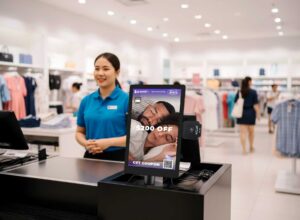 Pay-at-the-table solutions have proven value for restaurants. They save time, increasing table turns and allowing servers to spend less time on restaurant payments and more time on enhancing dining experiences and building loyalty.
Pay-at-the-table solutions have proven value for restaurants. They save time, increasing table turns and allowing servers to spend less time on restaurant payments and more time on enhancing dining experiences and building loyalty.
Without a pay-at-the-table solution, a server drops a check on the table, returns to retrieve a credit card, goes to a stationary terminal to run the card, returns to the table with a receipt that gives the customer an opportunity to add a tip, and goes back to the terminal to complete the transaction. This takes time and slows the merchants’ ability to turn tables expediently.
“Traditional” pay-at-the-table solutions involve the delivery of a purpose-built payment device to the table so that payment can be handled directly by the consumer. While this is popular in other parts of the world where EMV has been prevalent for some time, the US hasn’t universally adopted this approach in restaurants, mainly due to the on-going cost of purchasing and maintaining these devices and the lack of PIN-preferring EMV cards in the US that would require a device for PIN entry.
Pay at the Table, Post-COVID-19
With all of its advantages, pay-at-the-table technology also has some drawbacks, some of which are particularly apparent in the wake of the coronavirus pandemic. The most urgent issue is that in current pay-at-the-table processes, anyone — servers, other customers, restaurant staff — can touch the device. Even if restaurant staff cleans pay-at-the-table devices between uses, consumers may be reluctant to use them as consumers become more guarded against germ transmission post COVID-19.
However, virtually all restaurant customers already have their own payment devices: their smartphones.
Advantages of Consumer-Driven Pay at the Table
Besides giving diners the comfort of not having to handle a shared device, leveraging restaurant customers’ smartphones for pay-at-the-table processes has a long list of additional benefits, including:
- Security: Using a smartphone, which tokenizes payment data and doesn’t require data to pass through any part of the merchant’s POS system, makes restaurant payments more secure.
- Convenience: The customer drives the process, not the server, so there isn’t any need to wait when it’s time to pay. With the payment experience as the last touchpoint in a dining experience, a quick and convenient payment process can leave customers with a good overall impression of the restaurant and its service.
- Faster table turns: Traditional pay-at-the-table processes help servers turn tables faster, and a consumer-driven process can improve the table-turn rate even more by eliminating time waiting for shared pay-at-the-table devices or making guests wait while they complete their interactions with other tables.
- Customer Engagement: Restaurants have a greater opportunity to incentivize customers to join their loyalty programs, collect opt-ins for marketing communications, and request feedback through a smartphone app versus a pay-at-the-table device.
- Cost: A pay-at-the-table solution that leverages diners’ smartphones is much less expensive to implement than a traditional pay-at-the-table solution. Restaurants usually deploy one pay-at-the-table device for every two or three tables — so a restaurant with 30 tables needs to purchase between 10 and 15 devices, keep them charged, maintain and repair them, and replace them when needed. That expense is completely eliminated when customers make restaurant payments via smartphone.
CardFree’s Pay@Table Solution
Datacap partner, CardFree, enables consumer-based pay-at-table, mobile, online and on-premise ordering, loyalty and more.
Making a Great Idea Even Better
The types of pay-at-the-table solutions that U.S. restaurants now use were introduced in other parts of the world before smartphone payments — and the U.S. market for pay-at-the-table solutions still isn’t fully matured. Independent software vendors (ISVs) and value-added resellers (VARs) have the opportunity to leapfrog the traditional pay-at-the-table approach to give consumers control of the payment process and enable restaurants to engage with their customers directly.
Innovative ISVs and VARs are always looking for ways to improve their clients’ processes and help them operate more profitably. A customer-driven pay-at-the-table solution for restaurant payments is a great example of a next-gen process that will help you deliver more value to your clients.



